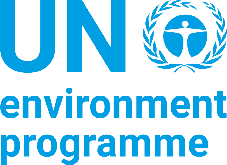Addis Ababa, Ethiopia’s largest city, is home to 3.4 million people. The city’s population, household incomes and economy is growing, and with it is air pollution.
Addis Ababa’s annual average concentration of fine particulate matter (PM2.5) is three times the World Health Organization (WHO) guidelines. This is raising serious health concerns among its residents.
The Ethiopian Constitution grants every citizen the right to access a healthy environment, meaning the government has a constitutional responsibility to develop measures to prevent pollution.
To provide a cleaner and healthier environment for all citizens the Addis Ababa Environmental Protection and Green Development Commission is developing an Air Quality Management Plan to bring ambient air quality to national and city standards by 2025.
This is an important work. A 2017 Global Burden of Disease Study showed that air pollution is the second highest risk factor for death and disability in Ethiopia. It is estimated that 21% of non-accidental deaths were due to exposure to poor air quality, equivalent to 2,700 deaths annually in the city. Without intervention to control air pollution, this figure is estimated to rise to 6,200 and account for 32% of deaths, by 2025.
Addis Ababa’s major air pollution sources are transport, industry, waste management facilities, and smoke from household cooking. The city does not have an air pollution inventory but a 2016 greenhouse gas inventory showed the transport sector was responsible for 68% of the city's direct greenhouse gas emissions.
The city faces challenges going forward due to a lack of city data on air quality, and no compressive plan to implement a city-wide air quality management plan. A major first task is to integrate existing air quality monitoring equipment and new monitors at different sites around the city.
Many stakeholders are working with the city to do this. This includes the United States Environmental Protection Agency (USEPA) Megacity Project, C40 Cities Climate Leadership Group (C40), and the World Resource Institute (WRI).
The USEPA is helping the city prepare its Air Quality Management Plan and is working with the United Nations Environment Programme on a demonstration project on air quality management. This initiative will raise awareness about the health and economic impacts of air pollution, assess the challenges facing air quality in Addis Ababa, and support local capacity to develop and implement its air quality management plan.
C40 has provided Addis Ababa with a small grant worth US $50,000 to assess air pollution and GHG emission data gaps from transport, a project that will increase the city’s data capacity. The city also received US $150,000 to develop a city-wide monitoring strategy and platform to track its air quality management.
Meanwhile, WRI is working with NASA on a project helps Addis Ababa protect people's health, by improving access to data and decision-making capacity to manage air quality.
In this first celebration of the International Day of Clean Air for blue skies, the Addis Ababa Environmental Protection and Green Development Commission reaffirms its commitment to act for healthy clean air for Addis Ababa's residents.
This story was submitted by Addis Ababa Environmental Protection and Green Development Commission. Non-UNEP stories highlighted here have been communicated to the United Nations Environment Programme (UNEP) by external partners in support of the International Day of Clean Air for blue skies and are shared here as a courtesy. UNEP is not responsible for the content. Inclusion here is not meant to be construed as an endorsement of the stories or the content therein.
